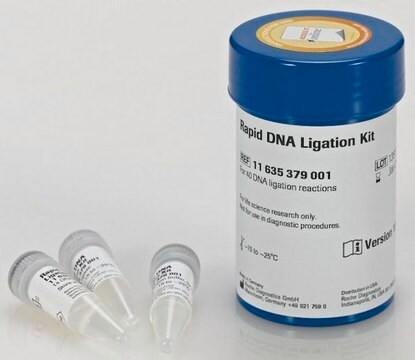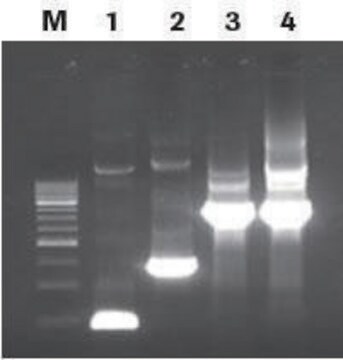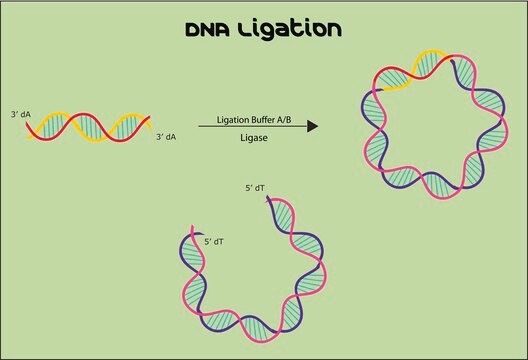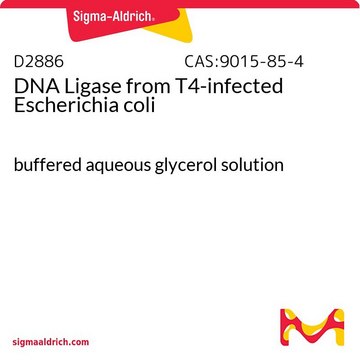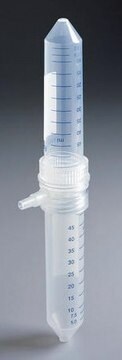LIG1
DNA Ligation Kit
About This Item
Prodotti consigliati
Grado
for molecular biology
Livello qualitativo
impiego
kit sufficient for 150 ligation reactions
Condizioni di spedizione
wet ice
Temperatura di conservazione
−20°C
Descrizione generale
Applicazioni
- Joining fragments of DNA into a cloning vector
- Mutagenesis
- Gene anyalysis and structure-function relationships
Componenti
- 300uL 10X Ligation Buffer (D2176) in 250 mM Tris-HCl (pH 7.8) 100 mM MgCl2, and 10 mM dithiothreitol
- 3 x 100 units T4 DNA Ligase (D2886) in 50% glycerol with 10 mM Tris-HCl (pH 7.5) 50 mM KCl, and 1 mM dithiothreitol
- 3 x 100 uL 10 mM ATP ( A3702)
- 50 uL Control pBR322 DNA, HAE III Digest (D9430) 0.5 ug/ul in 10 mM Tris-HCl (pH 8.0), and 1 mM EDTA
- 1.5 mL 24% (w/v) PEG Solution, (P 2454)
- 1.5 mL Molecular Biology Grade Water (W4502)
Principio
Prodotti correlati
Avvertenze
Warning
Indicazioni di pericolo
Consigli di prudenza
Classi di pericolo
Eye Irrit. 2
Codice della classe di stoccaggio
10 - Combustible liquids
Classe di pericolosità dell'acqua (WGK)
WGK 3
Punto d’infiammabilità (°F)
Not applicable
Punto d’infiammabilità (°C)
Not applicable
Certificati d'analisi (COA)
Cerca il Certificati d'analisi (COA) digitando il numero di lotto/batch corrispondente. I numeri di lotto o di batch sono stampati sull'etichetta dei prodotti dopo la parola ‘Lotto’ o ‘Batch’.
Possiedi già questo prodotto?
I documenti relativi ai prodotti acquistati recentemente sono disponibili nell’Archivio dei documenti.
Protocolli
The cloning process requires the ligation of linear DNA into a cloning vector. This ability to join fragments of DNA through recombinant technology is essential for many basic experiments in biotechnology.
Il team dei nostri ricercatori vanta grande esperienza in tutte le aree della ricerca quali Life Science, scienza dei materiali, sintesi chimica, cromatografia, discipline analitiche, ecc..
Contatta l'Assistenza Tecnica.